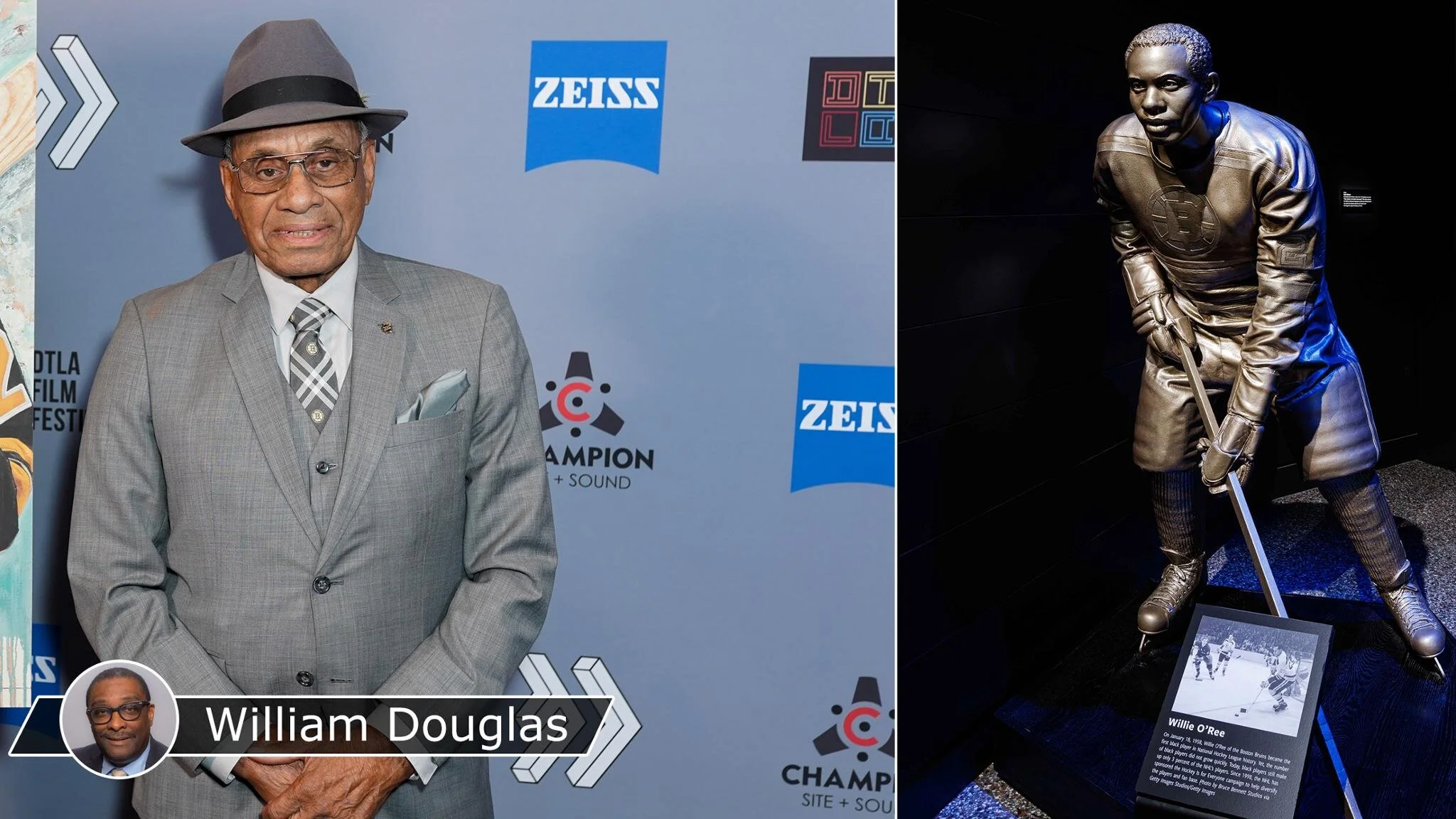O'Ree statue featured at National Museum of African American History
Article by William Douglas @WDouglasNHL / NHL.com Staff Writer
A statue of Willie O’Ree highlights a new Black hockey history exhibit at the Smithsonian National Museum of African American History and Culture in Washington, D.C.
The life-sized bronze figure and an exhibition case are part of the museum's "Sports: Leveling the Playing Field" gallery and are the first hockey items on display since it opened in 2016.
"When I visited the National Museum of African American History and Culture in 2018, I never imagined that I would one day be part of the sports exhibit," O'Ree said. "This is a very special honor for me and my family."
The exhibition case features a Columbus Blue Jackets jersey worn by defenseman Seth Jones; an autographed stick from Joel Ward, a forward, who played 726 games for the Minnesota Wild, Nashville Predators, Washington Capitals and San Jose Sharks; and hockey cards of Mike Marson and Bill Riley, Capitals teammates who were the NHL's second and third Black players, respectively (1974-75), and Tony McKegney, who was the first Black player in the NHL to score 40 goals in a season (1987-88).
The statue depicts O'Ree in the Boston Bruins uniform he wore when he became the NHL's first Black player Jan. 18, 1958, in a game against the Montreal Canadiens at the Montreal Forum.
Despite being blind in his right eye, O'Ree played 45 NHL games in two seasons (1957-58, 1960-61), all with Boston, and continued to play in the minor leagues until 1979.
He was inducted into the Hockey Hall of Fame in 2018 in the Builders category for his off-ice contribution to the sport, including helping to establish 39 grassroots hockey programs in North America as part of the NHL Hockey Is For Everyone initiative.
The Bruins are scheduled to retire O'Ree's No. 22 at TD Garden on Jan. 18, 2022. A bill to award O'Ree the Congressional Gold Medal, the highest honor bestowed by the United States Congress, is working its way through the House of Representatives and the Senate.
"Willie O'Ree changed our game by donning a Boston Bruins sweater and stepping onto the ice of the Montreal Forum 63 years ago," NHL Commissioner Gary Bettman said. "Willie is a humble, selfless man who not only paved the way for dozens of Black NHL players who have followed him but has used hockey to profoundly impact the lives of thousands of children as our League's Diversity Ambassador. He has earned every one of the many accolades he has received and this remarkable tribute, displayed in this special place, could not be more fitting."
Capitals owner Ted Leonsis agreed. He helped push for the inclusion of O'Ree and Black hockey history in the museum after he noticed their absence when he visited the sports gallery.
Leonsis contacted Earl Stafford, a Capitals part-owner who is a member of the museum's council, in the summer of 2019 and asked why.
"And my thinking was, 'Well, there aren't many Blacks (in hockey), and we don't have much to do with it,'" said Stafford, who is among the few Black men and women in NHL team ownership ranks. "During that call, Ted gave me an education of the impact, influence and involvement of Blacks in this game and how inclusive it can be."
That led to conversations with Lonnie L. Bunch III, director of the Smithsonian Institution, who was then the National Museum of African American History and Culture's director. Bunch committed to adding hockey to the gallery, Stafford said.
"What I'm most happy about is that the millions and millions of tourists and students and young people who come to visit the Smithsonian Museum will now see the NHL represented in the sports gallery and the first exemplar of that would be Willie O'Ree," said Leonsis, who has since joined Stafford on the museum's 30-member council.
The hockey exhibition case also includes items from two programs affiliated with Hockey Is For Everyone: a patch and USA Hockey magazine cover featuring Washington, D.C.,'s Fort Dupont Ice Hockey Club, the oldest minority-oriented youth hockey program in North America, and a patch and puck from New York's Ice Hockey in Harlem.
It also contains a 1904 article about the Halifax Eurekas and the Africaville Seasides of the Colored Hockey League of the Canadian Maritimes, a league that operated from 1895 to the 1930s.
"The skill, creativity and athletic abilities of these players were unmatched and defied the belief that Black athletes were incapable of playing such a sport," said Damion Thomas, the museum's sports curator. "Their story is one of resilience and determination, mirroring that of their ancestors who migrated north to escape slavery."

